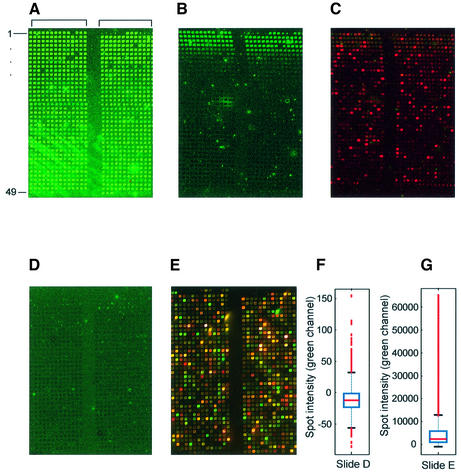Figure 6.
Increased time of slide exposure to atmosphere decreases retention of contaminating fluorescence but not hybridizable DNA after post-printing treatment. The S.cerevisiae genome 70mers set (Operon) in ArrayIt Micro Spotting Solution (TeleChem) was printed in-house on UltraGaps amino-silane (Corning) slides. A representative section spanning two pin groups (bracketed) is shown for each scan. Scans were done at PMT settings of 600, 600 for the red and green channels, respectively, unless noted. (A) Slide scanned immediately after printing. (B) Slide scanned after post-printing treatment. (C) Same slide as in (B) hybridized with random 9mers (Panomer Alexa 647, Molecular Probes) (PMT = 800, 550). (D) Slide ‘aged’ 4 h before print and then post-print treated. (E) Same slide as (D) hybridized with Cy3- and Cy5-labeled target reverse transcribed from 20 µg yeast total RNA (PMT = 570, 470). (F) Box-plot (see Fig. 2) of quantified spot intensities of scan shown in (D). (G) Box-plot of quantified spot intensities of a scan (PMT = 600, 600) of slide shown in (E).

